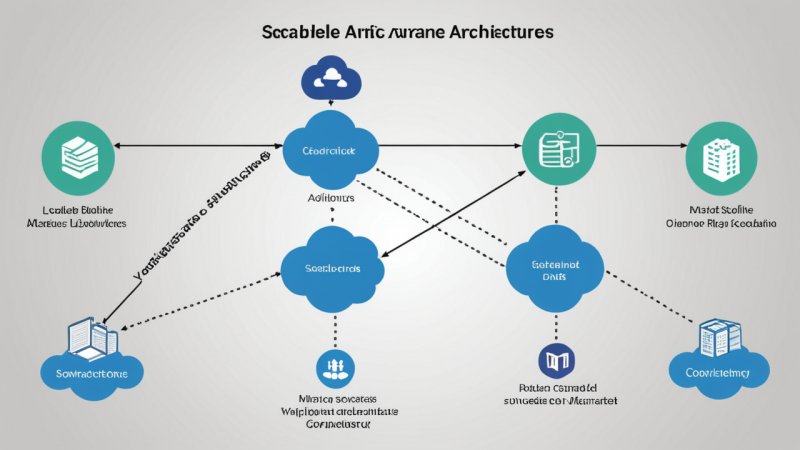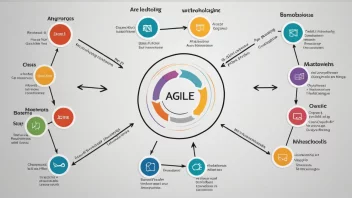In the ever-evolving landscape of software development, scalability has become a paramount concern for developers and organizations alike. The ability of a system to handle increased loads without compromising performance or requiring complete redesign is a key indicator of its resilience and effectiveness. This article delves into the principles, practices, and methodologies that underpin scalable software architecture, offering insights into how developers can design systems that not only meet current demands but are also poised to adapt to future growth.
Understanding Scalability
Scalability refers to the capacity of a system to accommodate growth, whether in terms of user traffic, data volume, or transaction rates. It can be categorized into two main types: vertical scaling (scaling up) and horizontal scaling (scaling out). Vertical scaling involves adding more resources (CPU, RAM) to a single server, while horizontal scaling entails adding more servers to distribute the load.
Choosing the right scalability strategy is critical for ensuring that applications can grow without suffering from performance degradation. As organizations increasingly rely on cloud services and microservices architectures, understanding scalability becomes even more vital.
Key Principles of Scalable Architecture
1. Decoupling Components
Decoupling components of an application is essential for scalability. When individual services or modules are loosely coupled, they can be developed, deployed, and scaled independently. This means that if one component experiences high load, it can be scaled without necessitating changes to other components.
2. Load Balancing
Implementing a load balancer is a common practice in scalable architectures. Load balancers distribute incoming traffic across multiple servers, ensuring that no single server becomes overwhelmed. This not only improves performance but also enhances redundancy and reliability.
3. Caching Strategies
Caching frequently accessed data can significantly reduce load on backend systems and improve response times. By storing copies of data closer to where they are needed, applications can serve requests faster and reduce the strain on databases and APIs.
4. Asynchronous Processing
Incorporating asynchronous processing into application design allows systems to handle tasks without blocking user interactions. For example, using message queues enables applications to process requests in the background, freeing up resources for other tasks.
Best Practices for Designing Scalable Systems
1. Microservices Architecture
Adopting a microservices architecture allows developers to break applications into smaller, manageable services. Each microservice can be developed, deployed, and scaled independently, promoting agility and resilience. For instance, an e-commerce platform may have separate microservices for order processing, payment processing, and inventory management, enabling each to scale as necessary based on demand.
2. Statelessness
Designing services to be stateless means that they do not retain user session information between requests. This allows requests to be distributed across multiple servers without the need for session affinity, greatly enhancing scalability.
3. Database Sharding
Database sharding involves partitioning a database into smaller, more manageable pieces, or shards. Each shard can be stored on different servers, allowing for more efficient data queries and improved performance. For example, a large user database could be sharded based on user IDs, with each shard handling a subset of the total user base.
4. Use of Cloud Services
Leveraging cloud services can provide on-demand resources that scale automatically based on usage. For example, cloud providers like AWS and Azure offer services that can automatically allocate resources during peak loads and scale down during quieter periods, optimizing both performance and cost.
5. Continuous Monitoring and Optimization
Establishing continuous monitoring practices is essential for identifying bottlenecks and performance issues. Tools such as APM (Application Performance Management) solutions can track application performance in real time, allowing developers to make informed decisions about scaling and optimization.
Case Studies
1. Netflix
Netflix is a prime example of a company that has mastered scalability. With millions of users streaming content simultaneously, Netflix employs a microservices architecture that allows it to scale individual services based on demand. By utilizing cloud infrastructure, it can dynamically allocate resources, ensuring that users experience minimal buffering and downtime.
2. Airbnb
Airbnb's architecture relies on decoupled services that communicate via APIs, allowing for independent scaling. The company uses caching strategies extensively to enhance performance, particularly for frequently accessed data such as user listings. Additionally, Airbnb employs a robust data sharding strategy to manage its massive database effectively.
Challenges and Considerations
1. Complexity Management
While scalable architectures offer numerous benefits, they also introduce complexity. Developers must ensure that communication between services is efficient and that each service is adequately monitored. Implementing service mesh technologies can help manage this complexity by providing a dedicated infrastructure layer for service-to-service communication.
2. Cost Implications
Scalability often comes with increased costs, particularly when utilizing cloud resources. Organizations must balance the need for scalability with budget constraints, making it crucial to implement cost-effective strategies such as autoscaling and resource optimization.
3. Data Consistency
In distributed systems, maintaining data consistency can be challenging. Developers must consider strategies such as eventual consistency and adopt frameworks that facilitate data synchronization across services.
Conclusion
Designing for scalability is not merely a technical challenge but a strategic imperative for modern software development. By adhering to best practices such as decoupling components, implementing load balancing, and leveraging cloud services, developers can create systems that are resilient, efficient, and capable of growing alongside user demands. As organizations continue to navigate the complexities of digital transformation, a robust and scalable architecture will be essential for achieving long-term success.






